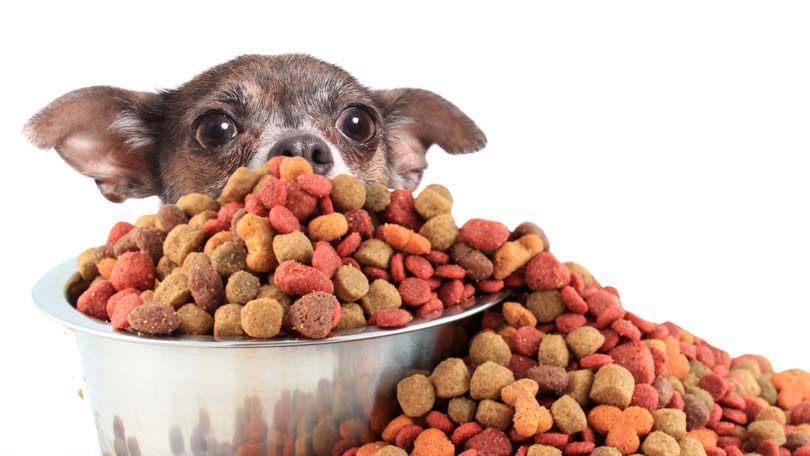
Consider the growth and development of a puppy:
Gestation is between 60 and 66 days meaning from egg to birth in two months.
When puppies are born, they are blind, deaf, and cannot walk, urinate, defecate or maintain their own body temperature without outside help. They are born this way because they are not in the womb long enough because their mother must be able to hunt and provide for them.
By the time they are 21 days old, they can see, hear, walk, control their bladder and bowels, their teeth have come in, and they can maintain their own body temperature. They can also play, bark, fight, and learn at an alarming rate. On average, a puppy of a medium sized breed will have gained four to six times its birth weight and will be beginning to eat solid food.
At eight weeks old, domesticated pups are ready to leave their mother. They can now weight up ten or fifteen times their birth weight depending on their breed and can hold their bladder for up to six hours if necessary. They may already know a handful of commands and are eager to learn how to live in harmony with humans.
Within another four short months, some breeds of dogs are sexually mature and able have a litter of their own although most responsible breeders wait until the dog is two years old to breed for myriad of reasons. A six-month-old puppy is a fully functioning member of the canine community and many working dogs are doing their ‘jobs’ within another six months.
In the first year of life, the average puppy puts in the equivalent of twenty-one to twenty-four human years in both physical growth and mental development. How are we supposed to feed a balanced and nutritionally sound diet to support that kind of change?
What you Need to Know About Feeding Puppies
Much like feeding human babies, feeding puppies is not rocket science and humans have been doing it for thousands of years. However, puppies are also living longer then ever before with a mortality rate far exceeding their four-legged equivalent even a century or two ago. In some ways, more is expected of them in our modern society with less time, energy and knowledge put into the average family pet then its ancestors. Add the drastic change to the dog’s natural environment and you realize why modern day pups require a high quality and well-balanced diet.
Not all puppy food is created equal! Fillers are ingredients that are literally empty calories, completely bereft of any significant nutrition. They work to fill up the tummy without providing the necessary nutrients to support a growing puppy.
How do you avoid these foods?
Price is a solid indicator. The profit margin on commercial dog food is small so cheap foods contain cheap ingredients. If the price seems to good to be true, it probably is!
Next, read your ingredients! Is corn listed in four different spots, all in a different combination of words? Corn meal, corn bran, and corn flour all start out as corn – sweet and simple. However, dog food manufacturers will break whole foods down into these smaller, lighter packages as ingredients are listed in order of weight on the bag. It is not until they are broken down into their core elements so they are ranked lower on the list in an effort to hide how much of one product is actually contained within the bag.
This ingredient list maneuvering can backfire with top quality ingredients, however, in the same way it hides the amount of fillers and low quality foods. For example, if various parts of the chicken are listed in four different ways in the first six ingredients, even if it is not the very first on the list, there is a good chance the bag contains enough high-quality protein to support a growing puppy!
After the quality of the nutrients in the food, the most important part of feeding puppies is making sure the level of nutrients matches the individual pup. Many people harbor the misconception that large breed puppies need more protein and calcium then small breed puppies because of how much they must grow in such a short period of time. However, consider the amount of food a small breed puppy eats versus a large breed puppy? Percentage wise, they actually require less protein and calcium because the volume of food they are eating is so much greater. Combine this with the fact large breed puppies should grow at a slow, steady rate, not in fits and starts or too quickly. A lower percentage of protein and calcium supports slow steady growth, lowering the incidence of growth related conditions in large breed dogs.
The last consideration is how much food to feed a puppy. Manufacturers recommendations are listed on the bag and are based on the weight of the puppy and the caloric value of the food. These are only guidelines, however, and common sense is required to keep your puppy healthy. Look at him before each meal. Is he getting a little pudgy? Cut back about ten percent. Is he looking skinny or ravenous? He may be in the middle of a growth spurt and require a few extra calories to make it through the day. Add a few extra kibbles to the dish but no more then ten percent of the entire meal – you do not want to overfeed him and make him vomit. This system of feeding to the dog’s body condition each day versus a measurement in a cup is a good habit to get into, as it will guarantee your dog stays at a healthy weight his entire life.
Feeding puppies is not rocket science. Use your common sense, read labels, and do your research before stepping into the pet food store. If in doubt, ask your veterinarian to recommend a food and discuss the nutritional requirements of your pup.
Bringing home your new puppy from a reputable breeder should be a highlight you will remember the rest of your life together. Ensure it is a long life by feeding him right from the moment he becomes a member of your family.





